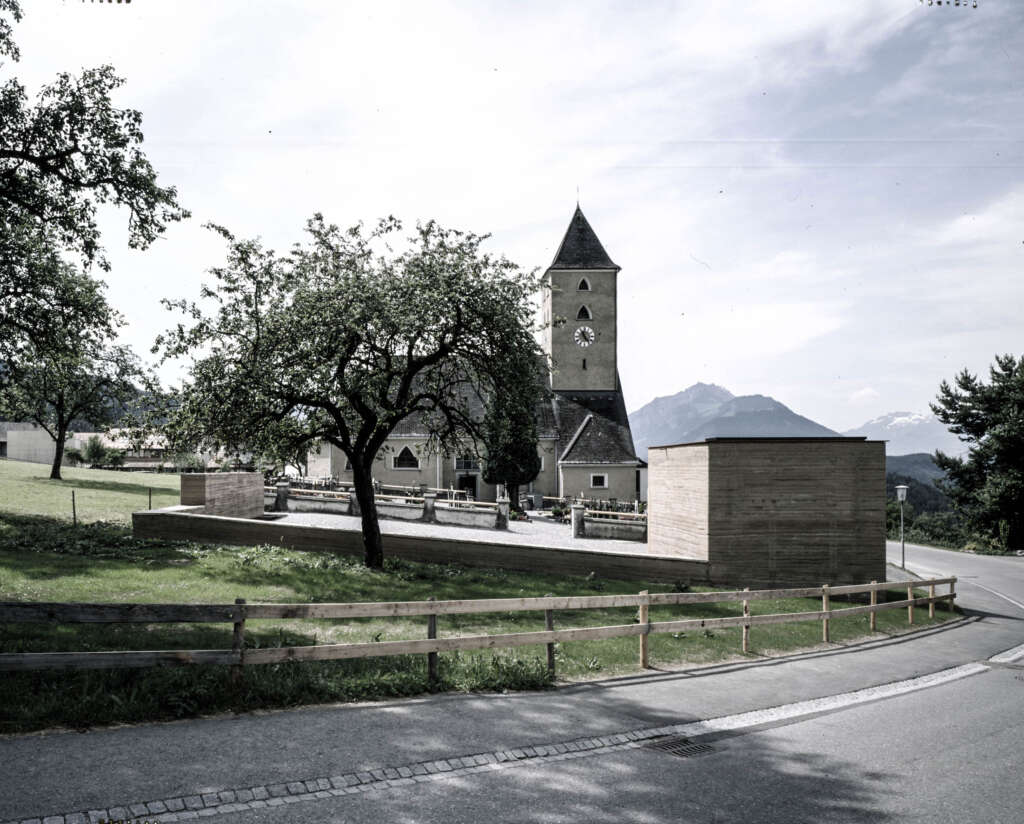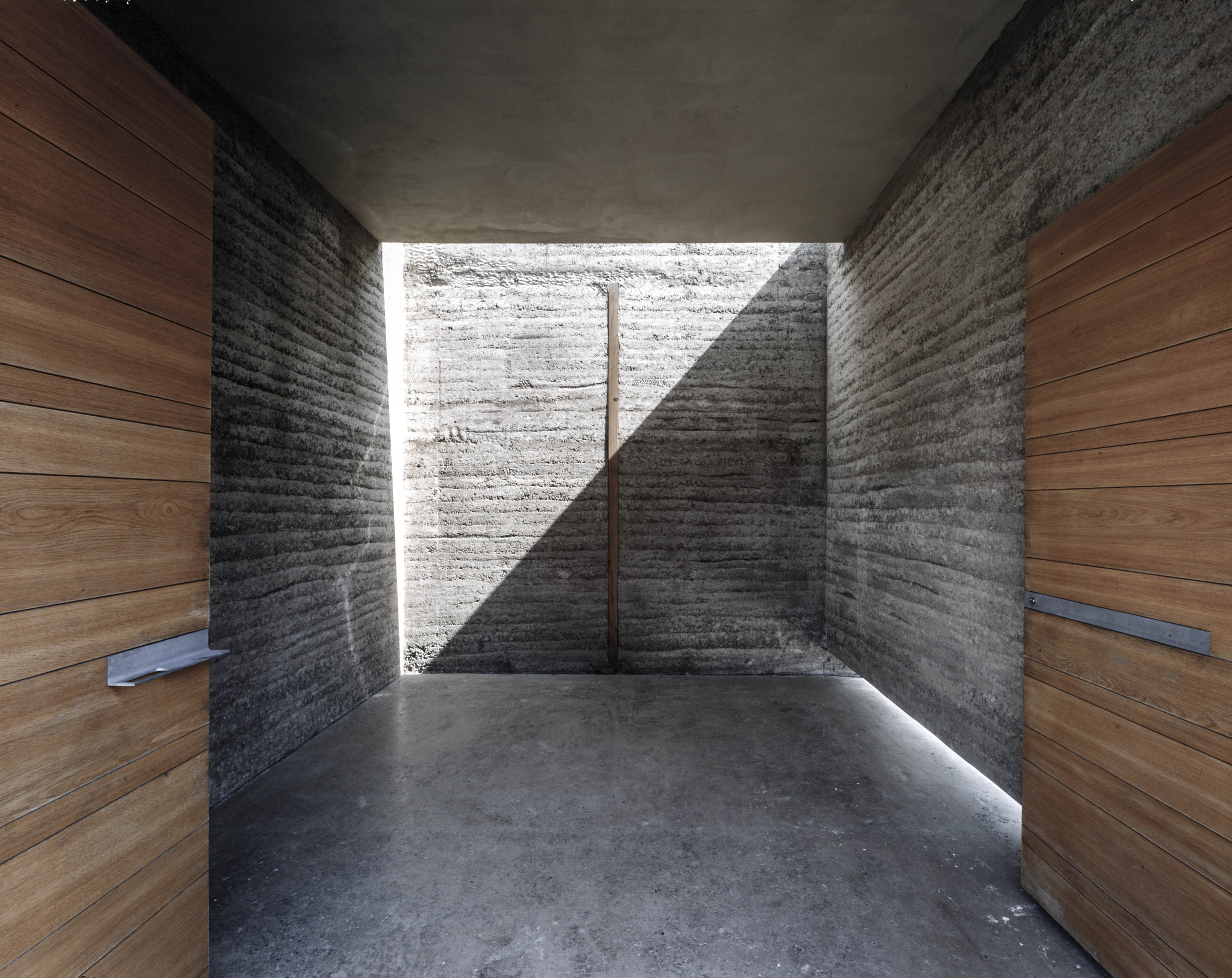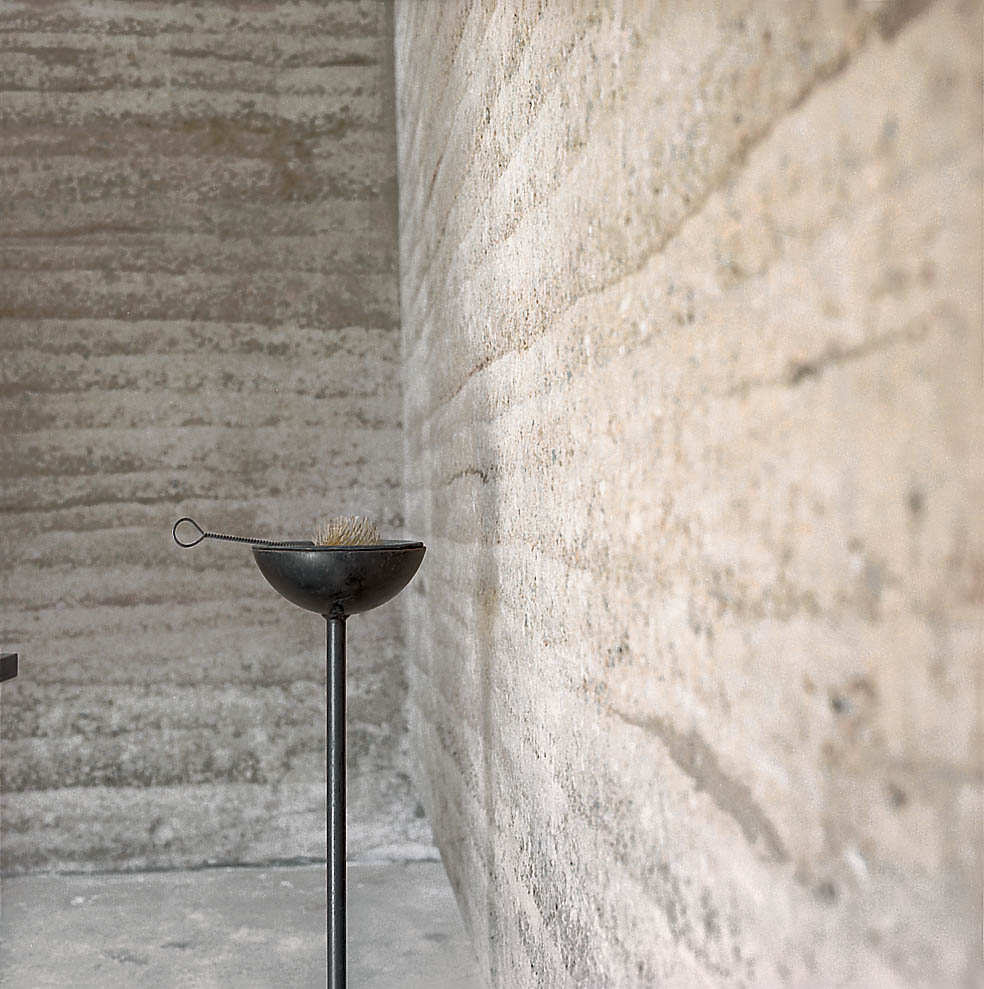
Cemetery extension and chapel of rest
Architects: Marte.Marte Architects
Location: Batschuns, Austria
Type: Chapel
Year: 2001
Photographs: Bruno Klomfar, Marte.Marte Architects
The following description is courtesy of the architects. Batschuns is a rural part of Zwischenwasser, characterized by separate single buildings. The existing church and cemetery by Clemens Holzmeister are located in a part of the village that is spatially very open. To the east is a green space with nearly nothing built on it; in the west, the Rhine valley opens up. The most characteristic feature of the existing church and cemetery is the clear separation of these two elements. Each located next to the other exudes its own autonomy in the midst of this very open environment. This type of structuring can only be complemented by another pure independent form. Thus the cemetery extension has been conceived as an independent continuation of the two pre-existing elements.
The concept picks up on the basic structure of the cemetery while presenting a formal differentiation. The traditional type of delineation with an encompassing wall is inverted by the creation of a low space-defining plateau. The plateau, with its understated edges, separates profane from sacred.
The strength of the dialogue between traditional and contemporary lies in the opposing solutions to the theme of spatial boarders. The quality of the old cemetery is not negated. But, through respectful coexistence, becomes more interesting. The new thus approaches the old without spatially or formally injuring it or impinging on it.

The goal of the design is simple path-structures corresponding to the village structure. As often as possible, existing pathway connections are retained and added to where needed. The new grave plots can be reached by passing over, as well as along, the old cemetery. For the lighting of the new cemetery, a new “light level” has been introduced; paths and squares are illuminated close to ground level and thus appear only as background.
A mortuary chapel and urn wall is part of the cemetery extension. Through the homogenous connection with the space-defining plateau, they are functionally and formally part of the whole complex. The chapel has been conceived as an introverted cube with positioned light openings.
An oak rod set into the clay wall forms the backdrop. From this dialogue between two elements, a cross ensues. The urn wall is part of the clay structure. Old steel frames sunk into the earth yield grave niches for the preservation of urns. The names of the deceased are commemorated in tender copper script on the clay wall. The plateau, mortuary chapel, and urn wall are reduced cubes made of rammed earth. Their minimal design in form and material create reserved background for graves designed independently. Individual grave fields and paths are strewn with pebbles. The clay material, with its reticently striated structure, conforms homogeneously within the surrounding natural space and strengthens the earthly relationship of the raised plateau and its integrated elements – mortuary chapel and urn wall.

Active participation of the citizens
The municipality of Zwischenwasser has always been conscious of the great responsibility entailed in expanding such a valuable ensemble as Clemens Holzmeisters church and cemetery. A public competition was thus organized to delineate basic principles. The winning project was based on permutation of the cemetery extension in rammed earth. For the awarding authority this was a great challenge for two reasons: First, this type of project had never been realized in clay and second, the project could only be realized with the active participation of Zwischenwasser´s citizens.
The well-known Austrian clay worker Martin Rauch from Schlins agreed to carry out technical implementation. After an intense period of cooperative planning and technical and logistical preparation, an immense amount of work was done by the community. It was a cooperative work on a project very important to everyone. The inhabitants of the parish of Batschuns did not get a cemetery extension, they built one.




